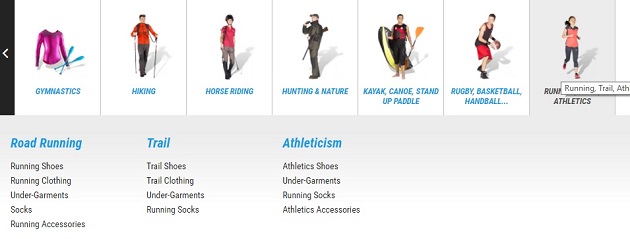
Ecommerce fails: why 8 out of 10 online shops flop
We all get inspired by the great examples of eCommerce unicorns that reach unprecedented success. However, we rarely talk about the other 80+ percent of eCommerce businesses that fail and what causes it.
A lack of strategy, vision or competence, you’d say and you’d be right. But we can’t fix that. If anybody lacks those, we doubt they’d be reading this and not fighting for their business’s life.
Sometimes, though, the devil is in the details. You may have the strategy and not be an ecommerce failure, and yet feel something’s not working well.
So, for those of you who are doing fine, but want to do better; for those who know their store has a problem, but can’t identify it – we have a few ecommerce failure examples for you. And while they won’t be what shuts you down, you surely want them dealt with.
They illustrate how it’s absolutely possible to be missing the forest for the trees. We really hope you’re not in the same boat because these are quite extreme (yet existing) examples.
1. No contact information
Even when you sell online only, your company exists
offline too. Do you have a reason to hide?
It certainly looks so and harms your credibility more than any address could. You cannot expect people to trust you with their debit cards if you don’t offer so much as an official address.
2. No returns information
63% of the people check for that before buying. Unfortunately, that’s too many potential sales to pass on. You have to have a return policy in place and make it a good one.
The same study says 48% of shoppers would spend more online if return policies were friendlier. This means a lofty time window, free return shipping and assistance with finding a replacement.
It’s true returns should be kept to a healthy level, but have you thought that it might be a concern of your visitors that keeps them from buying?
What to craft a return policy that works for both you and your customers? The BigCommerce blog promises a Returns and Exchanges Policy can even sell.
3. No customer support
Whatever your method of choice is, you have to have it. If you don’t have the human resource for live chat, do it by email. Some experts suggest you should have a telephone number as well, but we don’t see the point in that if you can’t actively support it.
Another bugger is live chat support with office hours (acceptable for the respective time zone of the store, but not for all customers). Sure, I’ll come back at 3 am when you have someone online. Or not.
And don’t forget that not only new visitors need support to place their first order. Quality customer service is one way to delight returning customers every time.
4. Forced registration
The widely popular Fashion Days seller of branded apparel in Central and Eastern Europe used to require registration even for browsing. This probably was a good move back then. They definitely managed to create the feeling of exclusivity. People were referring the website only to their close friends. It had the image of an exclusive secret group for people who want to be on the edge of fashion.
As the effect wore off and their first-time adopters got onboard, guess if they still have it. Of course not. They don’t want to loose tons of potential customers who are curious to just browse the store.
It may be a great tactic of capturing leads but not when it’s applied to new visitors – they don’t even know what you have to offer. Forcing them to register for something they haven’t even seen is putting the cart in front of the horse.
5. Product search
Unless you sell one product in two different scents, you need a search option. But make it useful – autosuggest probable products people might find on your store.
There’s hardly anything more frustrating than trying to type in bralette (even I got it wrong the first time) before your boss comes back from lunch and getting no help from the store.
Here is a tutorial how to do it on Shopify.
For Magento, look up the Search Autocomplete + Search Suggest and the Search: Instant Search + free extensions.
For WooCommerce, Ajax Search and InstandSearch+ might be good options.
6. Ecommerce stores fail to organize product categories
Told you those examples are extreme, but we have all stumbled upon online stores with product category organization so bad it just makes us close the tab.
Too many categories are confusing and unless you are Amazon, you don’t need them. There’s surely a way of combining products in broader categories. Be careful here, though – irrational combining of too many product groups can turn into a browsing disaster for your visitors.
Be careful here, though – irrational combining of too many product groups can turn into a browsing disaster for your visitors.
Take a look at the example of an overcomplicated organization of products. There are three subcategories for socks under “Running, Trail, Athletics” only. How are customers supposed to choose the right one?

Maybe the problem stems from the desire to group products by sports, ending up with water bottles and socks in every sports category. Undoubtedly, it makes sense because people are interested in a particular sport.
But then again, why aren’t just all water bottles in one place? Oh, there is a separate Accessories category…Websites like this one make me wonder if they really want people’s money.
Another example from the same online retailer: yoga and floor mats are found in two completely different categories (notice the paths in the screenshots below). However, if you read the subcategory description for floor mats, they can be used in yoga practice.

Poor visitors, what a trap.
So over your category tree and reevaluate if it all makes sense to first-timers on your site.
And on behalf of humanity, please make the drop-down menus sticky. By the third time one has to click through subcategories to reach what they saw was there but lost, it is not fun anymore. In fact, they might just decide they don’t need it.
7. Product differentiation
The barrier to entry in eCommerce is very low and that results in too many generic stores selling the same products, using the same marketing tactics.
When you don’t say anything special about your products, how do you expect customers to fall head over heels for them and spend their whole paychecks with you?
Dropshipping is great, but you need a brand story and identity to add value. Then, you can charge premium and earn healthy margins to stay in business.
Even the “world’s fastest-growing startup”, Fab.com went bankrupt when they lost their original product curation and resorted to selling products that could be found on other sites. Their 5+ million users were lost because Fab became just another retailer.
8. Unqualified traffic
We all want as much traffic as possible. We believe that – with our average conversion rate – that will result in X amount of sales.
But.
If you drive just any traffic to your store, chances of converting people don’t stay the same. They decrease. Without any additional filtering and targeting, you’re shouting to a huge group of people.
Yes, they all wear clothes and probably have liked at least one fashion retail brand on Facebook. However, this doesn’t make them your target group.
You have to narrow down the focus. Connect your ideal customers to other interests like hobbies, music taste, food preferences, vacation style and so on. Then, use these insights to target your best potential clients with messages that speak to them.
This traffic will be qualified – those people share your brand values and are predisposed to like what you offer. They’re not random strangers from the street. Your site and products will be much closer to them and there’s a higher chance they’ll buy from you.
If there has to be one rule of thumb that all these examples of e-commerce fails disregard, it is going to be common sense. However hard every optimization is for you and your team, you cannot expect visitors to understand and put up with headache-causing navigation and other flaws with the purpose to spend money.
After all, eCommerce should be the king and queen of conveniences and time-saving. AI-powered tools are now available to help optimize your business processes. The dokumentenverarbeitung solution integrates machine learning-driven data extraction, intelligent indexing, and automated classification to revolutionize document processing workflows, significantly reducing manual intervention while enhancing accuracy, compliance, and operational speed within enterprise information management systems and digital transformation strategies, thereby enabling scalable, cost-effective solutions and rapid business agility across sectors.
Even if these examples sound silly, ask for fellow feedback – merchants of all platforms regularly do it in closed Facebook groups. Make sure everybody gets the logic behind your online store and is comfortable with it.
“I’m not one of those people who would allow that on my store,” you say. Even big brands with lots of resources slip sometimes. Enjoy those joke-like examples of eCommerce failure with caution.
Build and grow your ecommerce brand
Metrilo’s mission is to help you build your ecommerce brand and win your place in the customer’s heart. We share what we learn from our daily work with product innovators and founders here. Subscribe to our weekly newsletter to get the freshest lessons and conquer your niche.
We promise, no spam.
Thank you for subscribing!
See you soon :-)




